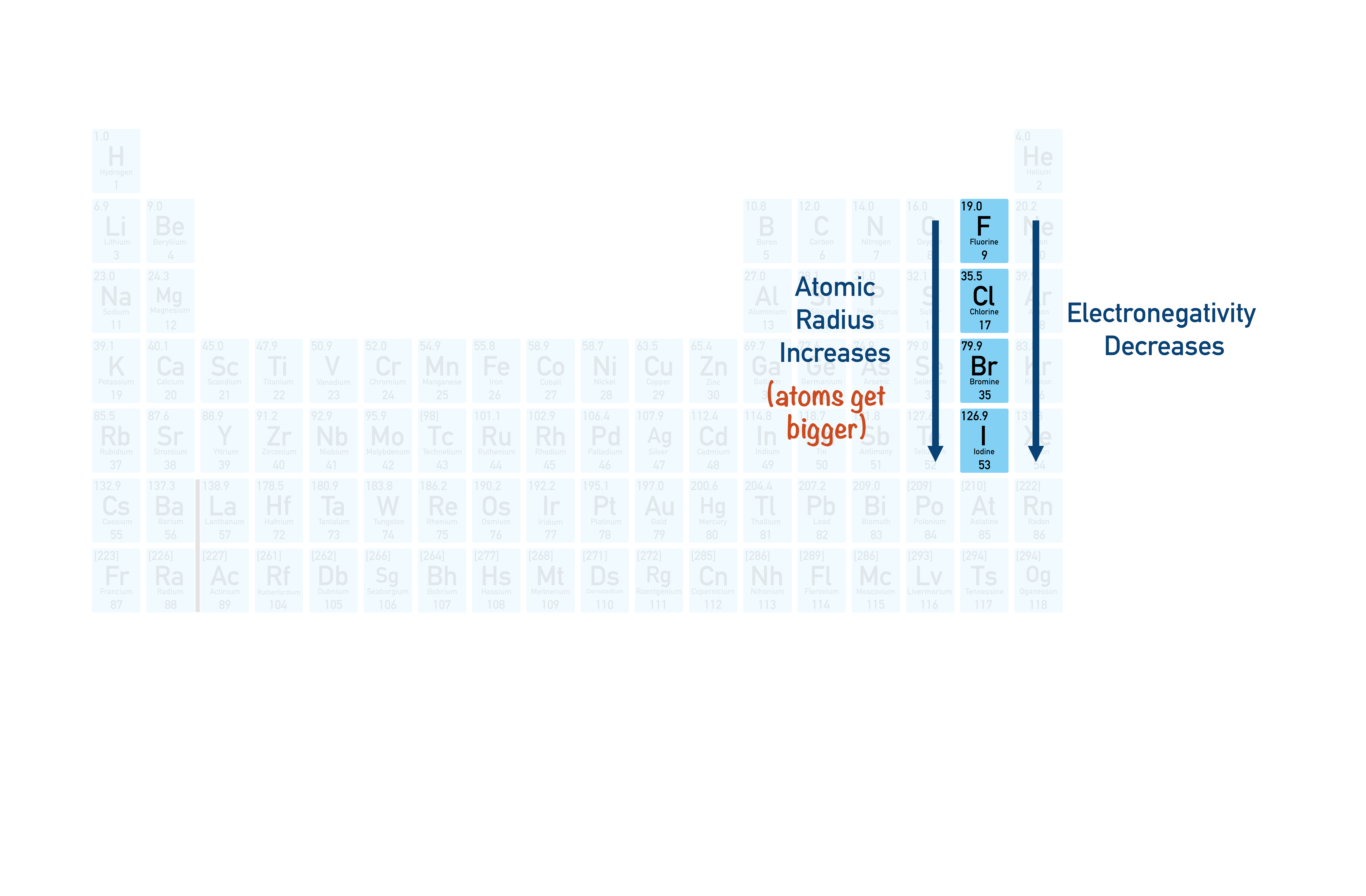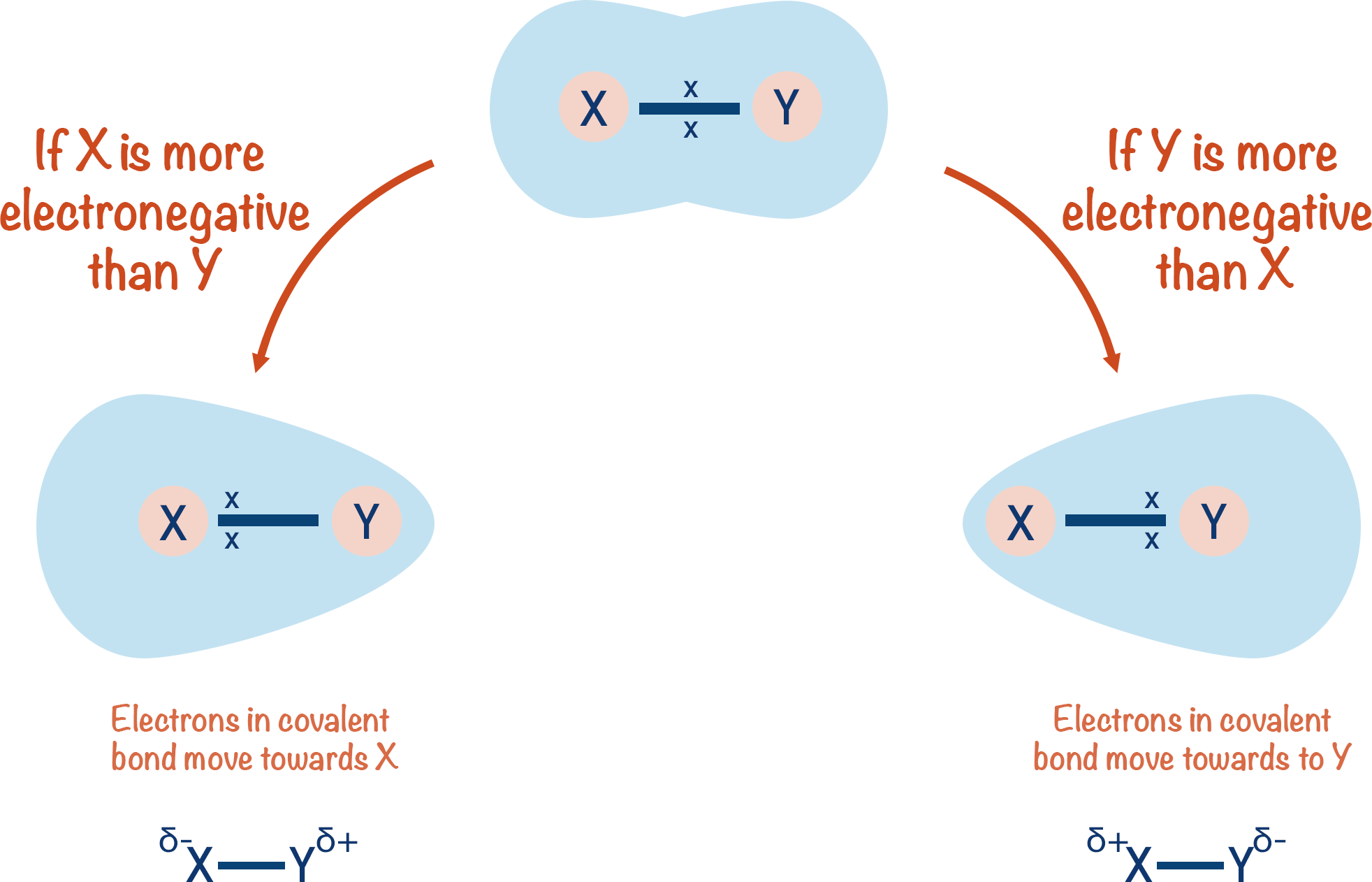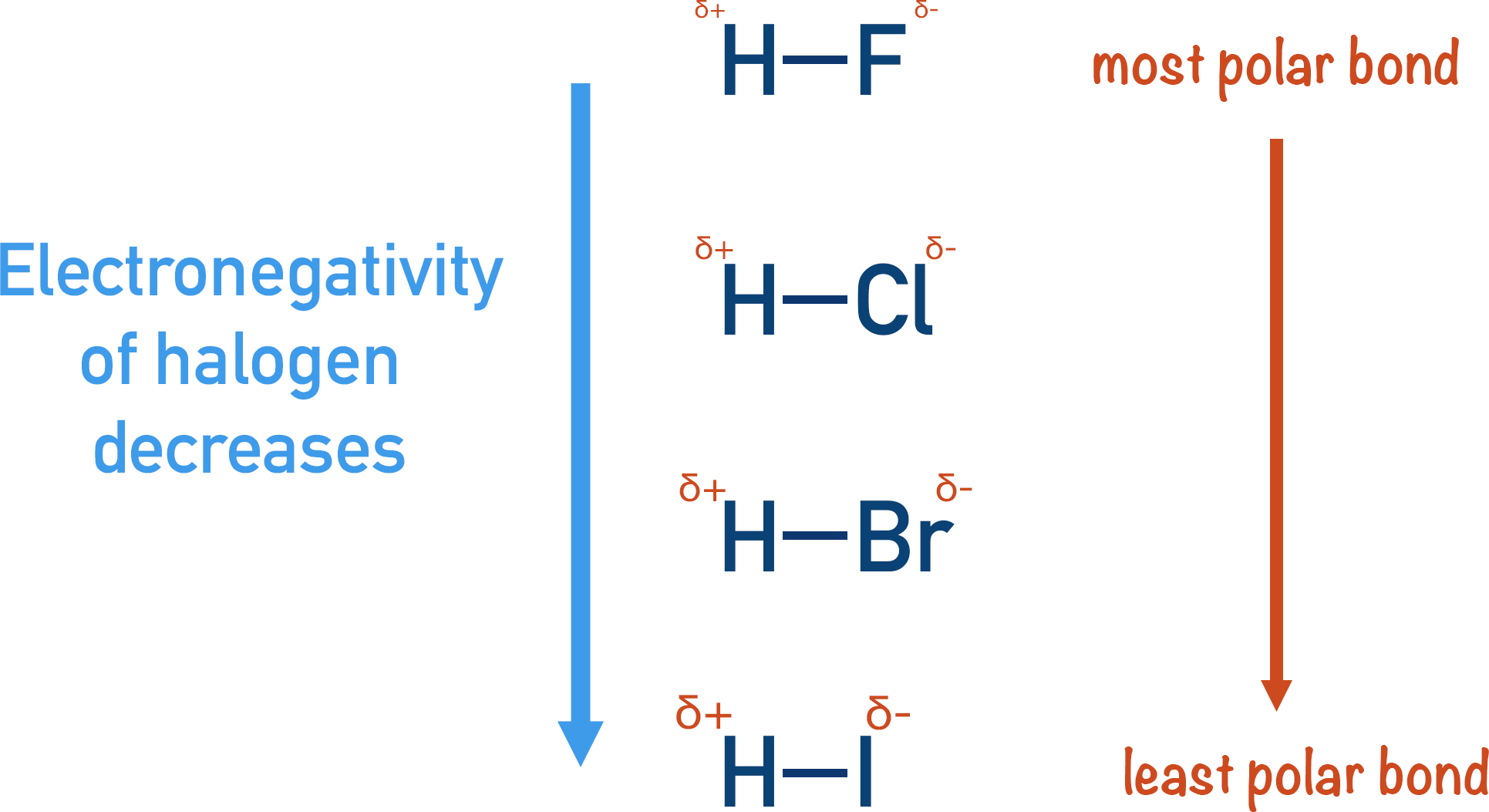Quick Notes The Halogens and Electronegativity
- Halogens are elements found in group 7 of the periodic table.
- Electronegativity is the tendency of an atom to attract a shared pair of electrons in a covalent bond towards itself.
- The halogens are highly electronegative elements.
- Down group 7, electronegativity decreases.
- Fluorine is the most electronegative halogen and forms highly polar bonds when bonded to atoms with low electronegativities. Polarity of such bonds decreases down the group.
Full Notes The Halogens and Electronegativity
The halogens are elements found in group 7 of the periodic table. They are all non-metals and have seven electrons in their outer shell. To get a full outer shell, halogens only have to gain one electron – it is this ‘desire’ to gain one electron that dictates their chemistry.

Trend in electronegativity
An atom’s electronegativity is its tendency to attract a shared pair of electrons in a covalent bond towards itself. The relative electronegativities of the halogens decrease as you go down the group.

Moving down the group the number of electron shells increases in each atom, meaning that the outermost electrons have more inner shells between them and the nucleus. These extra inner shells ‘shield’ the positive charge from the nucleus that reaches the outermost electrons. This is known as inner electron shielding.
As the positive charge felt on the surface of the atom is reduced, the halogen is less able to attract electrons in a covalent bond towards itself. Remember electrons are negatively charged and are attracted to the positively charged nucleus of an atom or ion.
The smaller the halogen atom, the more electronegative it is; the larger the halogen atom, the less electronegative it is.
When two atoms with a large difference in electronegativity are covalently bonded together, the covalent bond becomes polar. This means that the electrons in the bond are not evenly shared between the two atoms (see Bonding).
As electronegativity decreases as you go down group 7, the polarity of halogen bonds also decreases.

